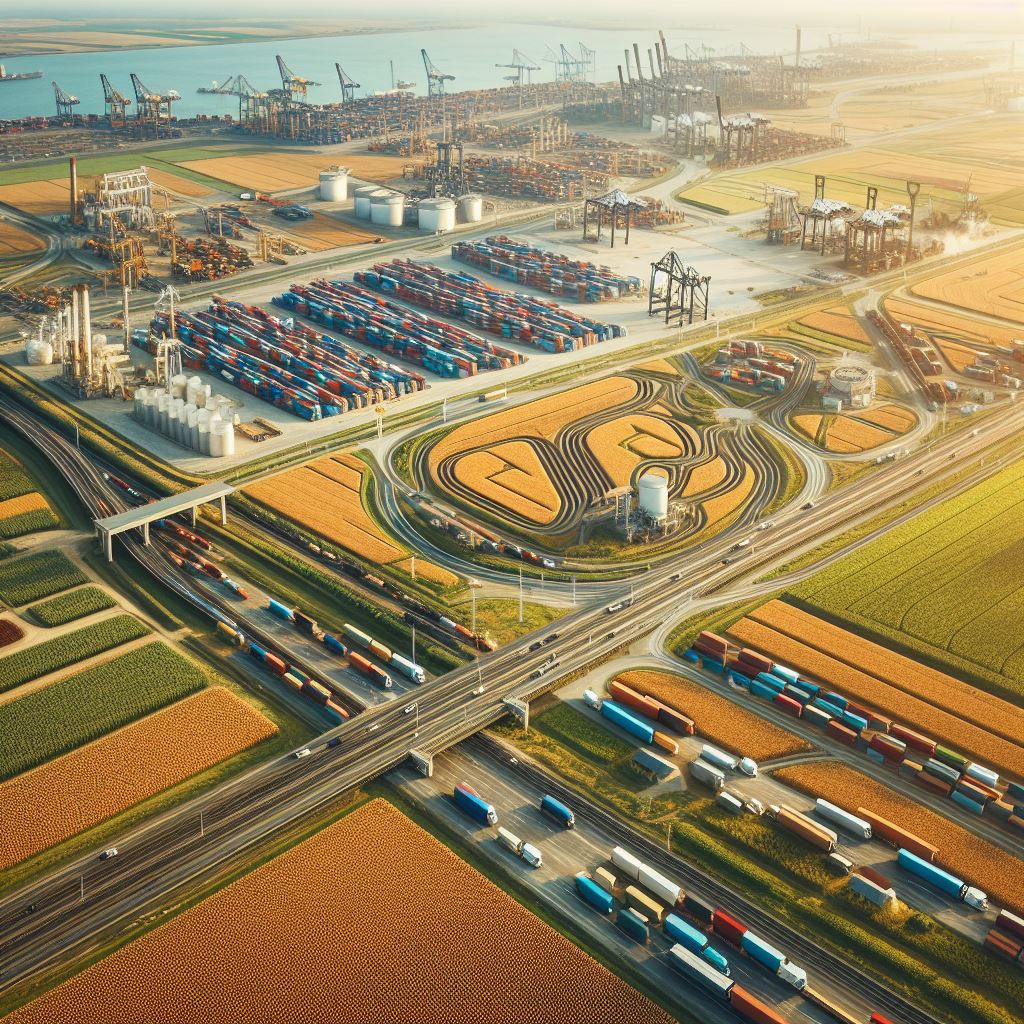
Food is a fundamental human necessity. From the grains that make our bread to the fruits that brighten our tables, the journey of food from farms to our plates is intricate and critical. This impressive feat of delivering farm produce across vast distances is enabled by the robust and efficient orchestration known as agricultural logistics.
Demystifying the Farm-to-Table Supply Chain
Logistics is a very important part by ensuring that farmers have the appropriate resources — be it seeds, fertilizers, or equipment — right when they need them.
The perishability of these products demands an immediate departure from the fields to prevent spoilage. This step is where cold chain management makes its grand entrance, maintaining specific temperatures to ensure produce stays fresh until it reaches the distribution centers.
Distribution centers act as the crucial hubs in this expansive network. Here, selection, packaging, and then loading onto trucks, planes, or ships are conducted with surgical precision. Coordinating these tasks effectively demands sophisticated scheduling and tracking systems.
The Mastery of Cold Chain Management
The concept of ‘cold chain management’ encompasses more than just refrigeration; it’s the art of temperature-controlled logistics. For many perishable goods distribution networks, maintaining an unbroken cold chain is the difference between profit and loss, freshness, and spoilage.
Refrigerated containers, also known as “reefers,” are a marvel in this aspect. They allow perishable produce such as dairy, meat, and fresh vegetables to travel across continents while keeping their freshness intact. Innovations like real-time temperature monitoring grant stakeholders the peace of mind that their goods are under constant surveillance for any fluctuations that might compromise quality.
Technology
It’s no overstatement to say that technology has revolutionized every industry, and agricultural logistics is no different. Precision agriculture tools enable growers to maximize yield and minimize waste, while data analytics help in predicting the best planting and harvesting times, thereby optimizing the supply chain.
The role of GPS tracking, IoT devices, and RFID tags in transportation is paramount. These technologies enable real-time location tracking and condition monitoring — from humidity to shock detection — ensuring that produce gets from farm to fork in the best possible state.
Advancements in route optimization software help dispatchers plan the most efficient routes, saving time and fuel while reducing the environmental impact of transportation.
Ensuring Sustainability in Agricultural Logistics
The concept of sustainability is reshaping the logistics landscape. In the case of moving agricultural produce, there are numerous considerations to juggle — resource utilization, carbon footprint, and packaging waste, among others.
One sustainable practice taking center stage is the use of biofuels and electric vehicles in transportation fleets. Such measures decrease emissions and environmental impact. Moreover, recycling programs for packaging materials and water conservation strategies at processing facilities are being implemented, signaling the industry’s commitment to ecological stewardship.
The Human Factor: Training and Compliance
At the heart of the intricate supply chain logistics are the skilled professionals who ensure its smooth operation. From drivers to packers, sorters, and managers, each individual must possess a deep understanding of handling perishable goods. Continuous training programs are essential to uphold compliance with ever-evolving food safety regulations, which are becoming more stringent globally.
A well-coordinated team is pivotal in swiftly addressing any disruptions that may arise within the supply chain. By promptly responding to challenges, such as unexpected delays or potential damage to sensitive cargo, the team can mitigate risks and maintain the integrity of the goods being transported.
The human factor is indispensable in ensuring the efficiency, safety, and compliance of supply chain operations. Investing in ongoing training and fostering a culture of compliance not only enhances the proficiency of individual workers but also fortifies the resilience of the entire logistics ecosystem. As supply chains continue to evolve and face new challenges, the expertise and dedication of these professionals remain fundamental to their success.
The Challenges in Agricultural Logistics
Despite the technological advances and rigorous strategies in place, agricultural logistics confronts formidable challenges. Climate change poses real threats to the consistency and predictability of supply chains. Extreme weather events can devastate crops, while altered growing seasons can disrupt traditional logistics planning.
The nature of perishable goods also complicates transportation. Variable demand, such as during festive seasons, can strain capacity, and logistical planning must account for these fluctuations to ensure shelves remain stocked.
Additionally, the rural setting of many farms often means that infrastructure — roads, bridges, and storage facilities — can be lacking or in need of upgrade. This infrastructural deficit can lead to increased transportation times and costs.
Embracing Regional Supply Networks

In response to the challenges mentioned earlier, the adoption of regional agricultural supply networks is gaining significant momentum. This strategic shift involves sourcing produce more locally, thereby reducing transportation distances. This reduction not only diminishes carbon emissions but also serves to strengthen local economies, creating a positive ripple effect.
Local supply networks exhibit greater agility, allowing them to adapt swiftly to changes in demand, weather conditions, or other factors affecting agricultural production. Additionally, these regional networks foster a closer relationship between consumers and the sources of their food, promoting transparency and accountability in the supply chain.
While global supply chains remain indispensable for ensuring food security on a global scale, local networks play a major role in sustainable agri-logistics. The interconnectedness of global and regional systems contributes to a more resilient and adaptable food supply infrastructure. This harmonious balance between global and local approaches is essential for addressing the complexities of modern agriculture while prioritizing environmental sustainability and community well-being.
The Future of Agricultural Logistics
Looking forward, the integration of emerging technologies and collaboration among stakeholders is key. Blockchain technology, for instance, offers the possibility of creating transparent supply chains where each step from farm to table can be traced and verified.
Collaborative efforts among producers, logistics providers, and retailers can lead to shared transportation, reducing the number of trips and maximizing load efficiency. This cooperation can extend to information sharing, where data from various sources is pooled to predict market demands more accurately.
The role of logistics in the farm-to-table supply chain is multi-faceted. From the moment the seeds are sown to the time fresh produce arrives at our local markets, it is a carefully coordinated dance of technology, management, and human expertise. As we look to the future, the continuous improvement and innovation in agricultural logistics practice will undoubtedly play a defining role in ensuring that food remains fresh, nutritious, and available to consumers around the globe.


